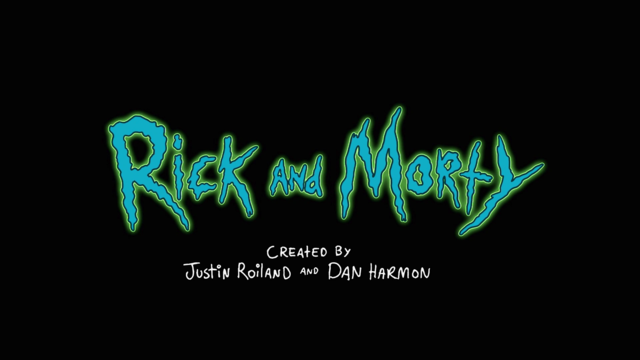
News
As Dean Long’s Departure Looms, Harvard President Garber To Appoint Interim HGSE Dean

News
Harvard Students Rally in Solidarity with Pro-Palestine MIT Encampment Amid National Campus Turmoil

News
Attorneys Present Closing Arguments in Wrongful Death Trial Against CAMHS Employee

News
Harvard President Garber Declines To Rule Out Police Response To Campus Protests

News
Harvard Suspends Palestine Solidarity Committee Amid Wave of Protests on College Campuses
Separating the Art from the Artist: A Call for Compassion

Separating the art from the artist is a debate that has risen to the forefront of the art world as our favorite musicians, writers, actors, and — most recently — animators have been exposed for their problematic views and actions. Today’s easy access to information via the internet has revealed the vices of artists faster than ever before, putting fans in a position to either defend or abandon the creators of the art that they adore.
Further complications arise when the implications of “staying true” to our idols entails social ostracization as a result of cancel culture. With new cases and stories coming out every week, perhaps it is time to adopt a changed perspective that allows room for artists to grow and victims to heal.
To begin, it should be noted that this issue is extremely broad, as there are celebrities with varying degrees of alleged publicly abhorrent actions: People like Marilyn Manson, who faced assault and sexual misconduct charges in a recently dismissed case and the late musician XXXTentacion, whose charges of aggravated battery against his pregnant ex-girlfriend were publicly denied and posthumously dropped. Most recently, Justin Roiland, the animator and voice of beloved adult cartoon Rick and Morty has been charged with domestic violence and fans have come forward with alleged message exchanges between Roiland and minors.
Though some of these examples are clouded in mystery or lack concrete convictions, the reminder that these artists are capable of such horrific crimes is often jarring for their audiences. For instance, many viewers of Rick and Morty turn to the cartoon for a comedic escape from reality — the show features raunchy, cynical humor which viewers have loved for six seasons. However, the actions of Roiland cast the potentially problematic and morally ambiguous jokes within the animated series into a new light.
When XXXTentacion passed away, many listeners were unsure of how to grapple with mourning a beloved musician as abuse allegations surfaced. Musician Jidenna addressed this conflict in tweets which acknowledged the domestic abuse perpetrated during XXXTentacion’s lifetime in a compassionate way. Jidenna said, “The young still have the capacity to reform…a young lost kid can evolve into something greater.”
Marilyn Manson used his influence in the hard rock scene to create a culture of abusing women in the name of being a self-proclaimed Antichrist Superstar. Manson recounted numerous anecdotes which test the limits of consent in interactions with fans. In his case, the contributions he has made to the heavy metal genre do not outweigh his contempt for respecting women and fans nor the glorification of his actions within his autobiography, “The Long Hard Road Out of Hell.”
Finally, there are those artists who manage to be generally subpar people in ways which are not against the law. This includes misogynists, racists, homophobes, and the like — self-proclaimed bigots or otherwise publicly known. It does not take much investigation to discover big names in a variety of fields: J.K. Rowling, whose commentary on the trans community in a series of tweets divided fans of Rowling’s book series “Harry Potter.”
Azealia Banks, another Twitter fiend, fits into multiple categories from being banned multiple times for using language that is both homophobic and transphobic to facing charges for second-degree assault in a case which has since been reduced in a plea deal. Attempts for reentry into respective art scenes post-cancellation or call-out often double down on the flawed perspectives rather than address the inner reflection which must take place.
So, what does all of this mean? Surely, big-time offenders cannot be praised and idolized in good faith. To complicate the matter, for many of these artists the people they persecute comprise the majority of their fanbase. For this reason it would be unreasonable to ask that every gay club stops playing Banks, or for transgender Harry Potter fans and allies to burn their books and posters, but by continuing to support these artists, fans are indirectly supporting their causes and ideals.
As consumers, we must be mindful of where we spend our money and who receives our glorification, but it is unrealistic to completely remove these artists from the mainstream. Many are pioneers in their respective fields who contributed influence to their genre, not to mention the impact their work has had on fans. At the end of the day, giving due respect and support to victims is more important than a piece of artwork. We can acknowledge their contributions without allowing celebrity status to enable and normalize abuse and bigotry. Instead of complete cancellation and artwork erasure, providing room for artists to grow and become better humans allows for healing on all ends. Real changes in the culture within these art spaces and music scenes can occur through calling out wrongdoing and remembering the stories of victims.
Want to keep up with breaking news? Subscribe to our email newsletter.
